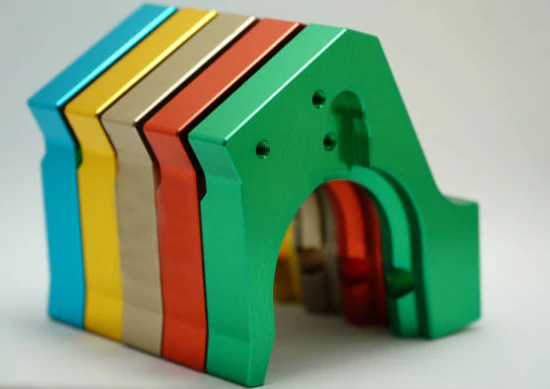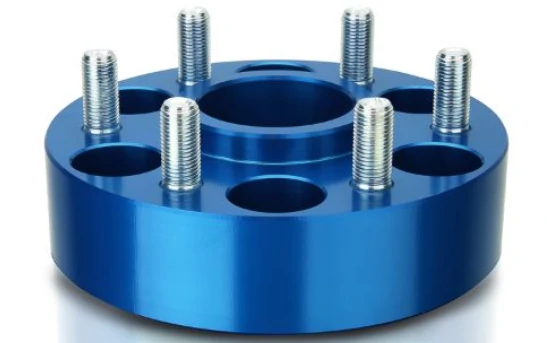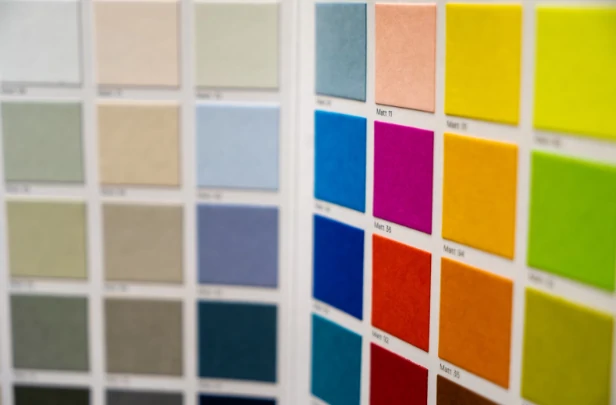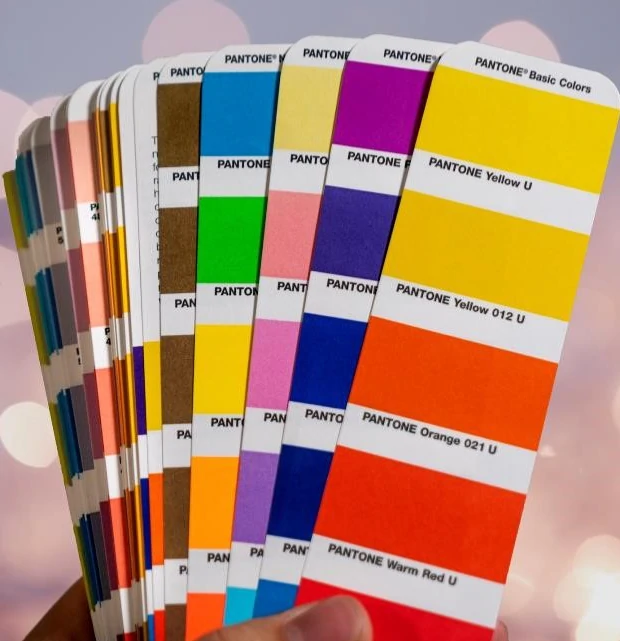Hard anodized aluminum colors vary, depending on factors like types of dyes used, aluminum grade, and surface finish applied. Therefore, a proper understanding of the anodizing process cannot be overemphasized.
This guide aims to answer questions like: what are the hard anodizing colors? How to color aluminum products using anodizing? And the concept of color matching and materials for the anodizing process.
Read on to properly understand hard anodized aluminum colors.

Overview of the anodizing process
Except for seasoned professionals, you are probably wondering what is the aluminum hard anodizing process. However, you have to understand anodizing before learning what is hard anodized aluminum. There is a difference and that is what this section explains.
Aluminum anodizing is the electrochemical process that enhances the thickness and durability of aluminum products’ surfaces using natural wear-resistance oxide layers. The anodizing process involves immersing the aluminum in an electrolytic solution under the action of an electric current. The formed oxide layer based on the equations below is then allowed to dry and sealed to obtain better aesthetics.
- Anode: 2Al + 3H2O = Al2O3 + 6H+ + 6e–
- Cathode: 6H+ + 6e– = 3H2
- Overall anodizing reaction: 2Al + 3H2O = Al2O3 + 3H2
The advantages of aluminum oxidizing are improved corrosion resistance, enhanced surface hardness, decorative finish, and better adhesion for paint primers. In addition, the different types of anodizing processes are hard coat anodizing (Type III), chromic acid anodizing (Type I), and sulfuric acid anodizing (Type II). However, this guide focuses on hard anodizing.
What is hard anodizing?
Hard anodizing is an electrochemical process that is quite similar to the sulfuric acid anodizing (Type II) process but creates a particularly thicker and denser oxide layer on the aluminum surface.
The thickness of hard coat anodizing ranges from 12.5 to 80 microns and the comparison with other types of anodizing methods is in the table below. In addition, hard anodized aluminum parts are characterized by higher color dyeing potential, wear, and corrosive resistance.
Tabular comparison of Type I, Type II, and Type III anodizing processes
| Type of Anodizing | Electrolyte used | Coating thickness layer | Wear resistance | Corrosion resistance | Porosity |
| Type I anodizing (Chromic Acid) | Chromic acid | 0.08 to 0.25 μm | Poor | Good | Low |
| Type II-anodizing(Sulfuric Acid) | Sulfuric acid | 2.54 to 25 μm | Moderate | Good | Moderate to High |
| Type III anodizing(Hard coat anodized) | Sulfuric acid | 12.7 to 80 μm | Excellent | Excellent | High |
Hard anodizing colors: How to color aluminum products using anodizing process

The process of getting hard anodized aluminum colors is quite different from other methods like painting or powder coating. Hence, this is how to color aluminum products using an anodizing process.
1. Clean the aluminum product
Before you start aluminum anodizing, it is important to clean the metal surface to remove contaminants and existing film layers that can disturb effective anodization. This hard anodized aluminum colors guide later explains the mechanical and chemical cleaning processes to achieve that.
The chemical cleaning involves using acid baths or alkaline solutions like lye (concentrated NaOH). Alternatively, you can use mechanical cleaning like sandblasting. Subsequent traces of metal left behind are removed through etching.
2. Aluminum anodizing
Aluminum anodizing is next and involves immersing the cleaned aluminum parts in an electrolytic bath as part of the electrochemical process. The bath is a 50/50 mix of water and acid solution, usually sulfuric acid for Type II and Type III anodizing process types.
Electric current passes through the solution and creates the thick anodized layer via a controlled oxidation reaction. The process continues for about 40 to 50 minutes after which you remove the hard anodized aluminum from the electrolytic bath. Variations in the solution’s concentration, voltage, and temperature of the electrochemical setup determine the depth of film pores.
3. Adding color to hard anodized aluminum parts
While dyeing is a common approach to adding colors to anodized aluminum, there are four different methods. The others are electrolytic coloring, hybrid coloring, and integral coloring.
Dyeing
Dyeing is the most common method of getting hard anodized aluminum colors. The pores formed during aluminum anodizing are filled up by immersing the metal parts in a tank consisting of a dye.
The dyeing method allows for a wide range of color variations but the produced colors have poor UV resistance. The dye coloring process is completed by boiling the aluminum surface in de-ionized water.
Electrolytic coloring
You can also color your anodized films using the electrolytic coloring method. Instead of immersing the aluminum part in a dye, we use a solution of metallic salts. The salts fill up the aluminum pores to produce a coating layer with strong UV resistance. There are fewer color variants available with electrolytic coloring compared to dyeing.
Hybrid coloring
Those who need help with obtaining hard anodized aluminum colors can try hybrid coloring. It is a combination of two coloring methods. For example, integral color anodizing and dyeing produce a broader range of colors like green, blue, and red with improved color stability.
Integral coloring
With integral coloring, there are even fewer anodizing color variants with black and bronze options serving as major options. However, the surface of the anodized colored aluminum has better abrasion resistance.
4. Sealing
Sealing is the last part of the process of adding colors to hard anodized aluminum products. Since the different methods for anodizing colors involve the absorption of the solution molecules to fill up the pores, sealing is necessary to filter undesired molecules.
Sealing is performed by immersing the aluminum parts again, but in heated water (about 200ºF) to form hydrated aluminum oxides that close the pores. Therefore, sealing enhances the durability and corrosion resistance of anodized coating layers.
What Are the types of acid used To color anodize?
Whether it is the Type I, Type II, or Type III anodizing processes, there are two types of acids used to achieve hard anodized aluminum colors.
1. Chromic acid
Using chromic acid for aluminum anodizing produces thin coating layers of about 20 to 100 microinches thickness.
2. Sulfuric acid
Sulfuric acid is more commonly used for anodizing processes, particularly the Type I and Type II anodizing types. In addition, sulfuric acid produces a thicker aluminum oxide coating film of about 100 to 1000 microinches thickness. Hence, it has applications in hard anodized aluminum.
Color matching

Color matching is a concept that involves aiming for a specific and consistent color shade on anodized aluminum parts. It is crucial in industries like aerospace and consumer electronics where precision in colors is vital.
However, aluminum anodizing color is subtractive, unlike additive coloring techniques like painting. We use light to explain color matching.
Imagine directing white fluorescent lighting to a red cup. What color does the cup reflect? The answer is red! That is similar to how hard anodized aluminum coloring works. The formed anodized film transmits light to the base of aluminum parts that get reflected on the exterior.
Color matching is easy for colors that belong to the same group. However, you should check out the factors that affect the color of anodized coating in the following section.
Factors that determine hard anodizing colors’ appearance
The color of the anodized coating layer is dependent on the following factors.
1. Aluminum grade
Different aluminum alloys or grades produce different colors during the anodizing process which affects color matching.
2. Thickness of anodized coating
Thicker coating layers like hard anodized aluminum derivatives would imply a darker color variant compared to Type I or Type I anodizing process products.
3. Anodizing process parameters
Factors like the voltage applied, duration of aluminum anodizing, temperature and type of electrolyte solution also affect color matching.
4. Number of dyes
The number of dyes can impact the color variation of anodized coatings. Color variation increases as you use more dyes.
5. Surface finishing
The type of surface finish plays a huge role in how the anodizing colors are perceived. For example, polished surfaces would have brighter surfaces.
Hard anodizing properties
If you understand how to color aluminum products using anodizing, you might want also to know the different anodizing properties.
- Hard anodized aluminum has thicker coating layers that typically mean darker colors.
- The hard anodized aluminum colors have a wide range including blue, gold, green, black, and blue.
- The color of hard anodized films could gradually change or fade away when exposed to UV rays
- Hard aluminum anodizing enhances the insulation or electrical conductivity of the metallic surface. Useful in electronic parts application.
- Hard anodized aluminum colors last longer than pigment painting or dyeing because of a thick coating layer that is resistant to scratches.
What are the hard anodizing colors?

Different types of hard anodized aluminum colors are available but vary depending on the process parameters and type of anodizing process. However, the following are the possible anodizing colors for aluminum.
- Black
- Blue
- Red
- Gray
- Gold
- Silver
- Bronze
- Green
- Copper
- Pink
- Brown
- Yellow
Important tips when color anodizing
Learning how to color aluminum products using anodizing is not enough. You must also understand important tips for achieving consistent anodized colors and shades.
- Ensure that color anodizing of similar aluminum products that require consistent colors belongs to the same batch. That eases the anodizing process.
- Never completely rely on images for selecting hard anodized aluminum colors. Reflections from external lighting sources could cause significant variations from the originally intended colors and shades.
- Pay close attention to anodizing process parameters like voltage and bath temperature of electrochemical setups. These parameters affect color consistency and intensity.
- Always clean aluminum surfaces and choose appropriate organic or inorganic dyes. We always recommend dyes that are fade resistant like the copper complex or nickel acetate dyes.
- Maintain color consistency by using the same facility for multiple anodizing processes.
- Constantly use color measurement devices like spectrophotometers to monitor color quality and shades at periodic intervals of the anodizing process. It increases the chances of accurate color matching.
How to remove the aluminum hard anodizing color when it does not match?
Even after learning how to color aluminum products using anodizing, mistakes could still happen with color matching. How then do you remove the anodizing color when it does not match?
1. Chemical stripping
Chemical stripping is an effective method of removing aluminum anodizing color by immersing the aluminum part in a solution that dissolves the hard anodized layer. Sodium hydroxide is a common chemical stripping solution.
2. Abrasive method
You can use abrasive methods like sanding or polishing to remove hard anodized colors. However, there is a high possibility that part of the anodic layer is also removed, affecting the surface texture and finish.
3. Electrolytic stripping
Use electrolytic stripping to remove hard anodized aluminum colors via electric current. The usual practice is to combine electrolytic stripping with chemical stripping.
4. Blasting
The mentioned methods might not be suitable for removing aluminum anodizing colors from intricate shapes and surfaces. Therefore, blasting with Al2O3 or glass beads is another technique to remove anodizing colors.
5. Mechanical removal
Mechanical scrapping methods also work for removing anodizing colors that do not match. However, it is labor-intensive and only suggested for small aluminum parts.
How long do hard anodized aluminum colors last?
Hard anodizing colors typically last long since their coating layer is thicker than other anodizing process metals. Therefore, an approximate period is 20 years or more.
Conclusion
This hard anodized aluminum colors guide explained the anodizing colors and factors that could influence color matching. You can contact a Longsheng expert for more information and help with additional questions you might have about implementing these methods.
At Longsheng, we offer different manufacturing services for prototyping and bulk production. You might also wish to use our online quotation estimate service.
FAQ
Common applications of hard anodized aluminum colors include creating decorative finishes in automotive or aerospace components and enhancing the aesthetics of jewelry.
A simple method is the scratch resistance test. The surfaces of hard anodizing aluminum do not scratch easily like regular aluminum parts.
The color of anodized aluminum parts varies depending on the type of dye, metal grade, or surface finishing used. However, hard anodizing colors like black, gray, and bronze are frequently employed.
While all the aluminum grades create excellent anodized coating layers, the 6063 series offers consistent and fine surface finishing.
There is a slightly different convention for naming hard anodized colors. We typically use “dark blue” for colored anodized layers instead of variations like “deep sky blue”.


